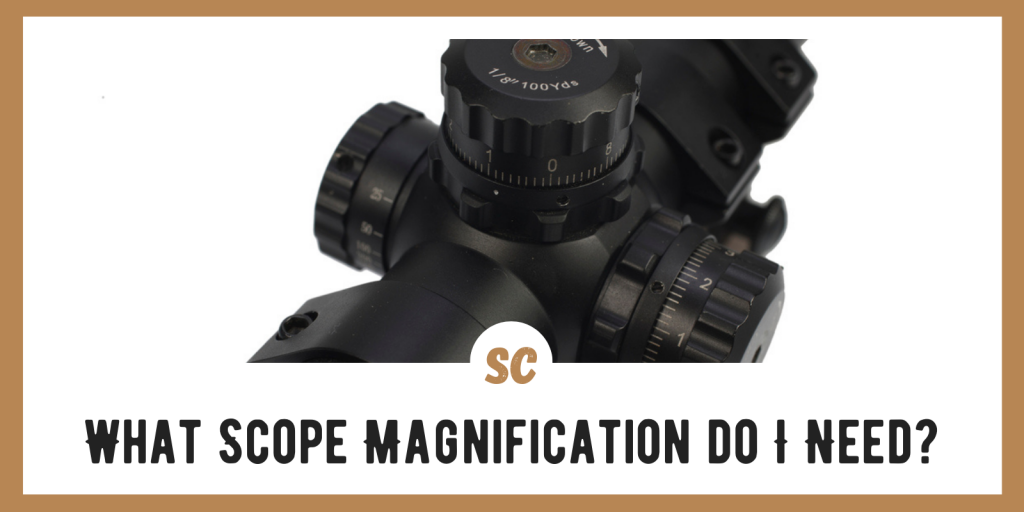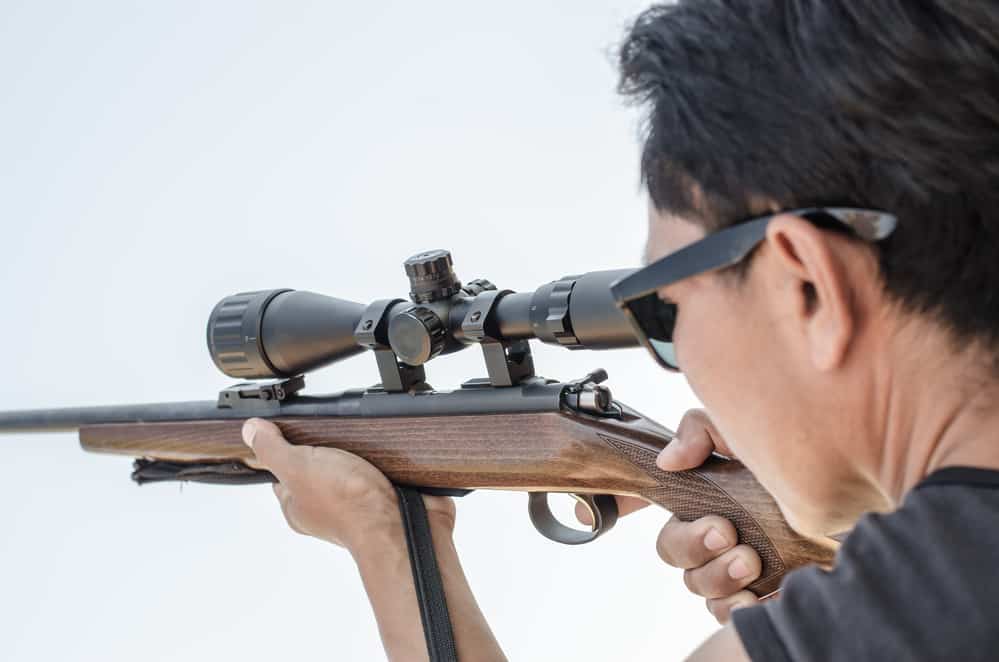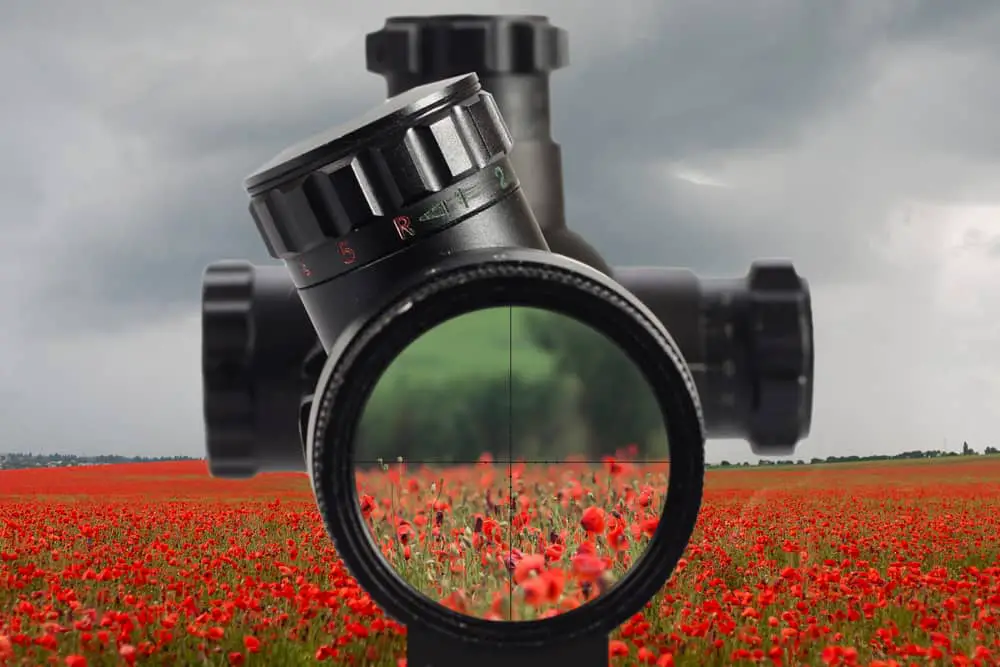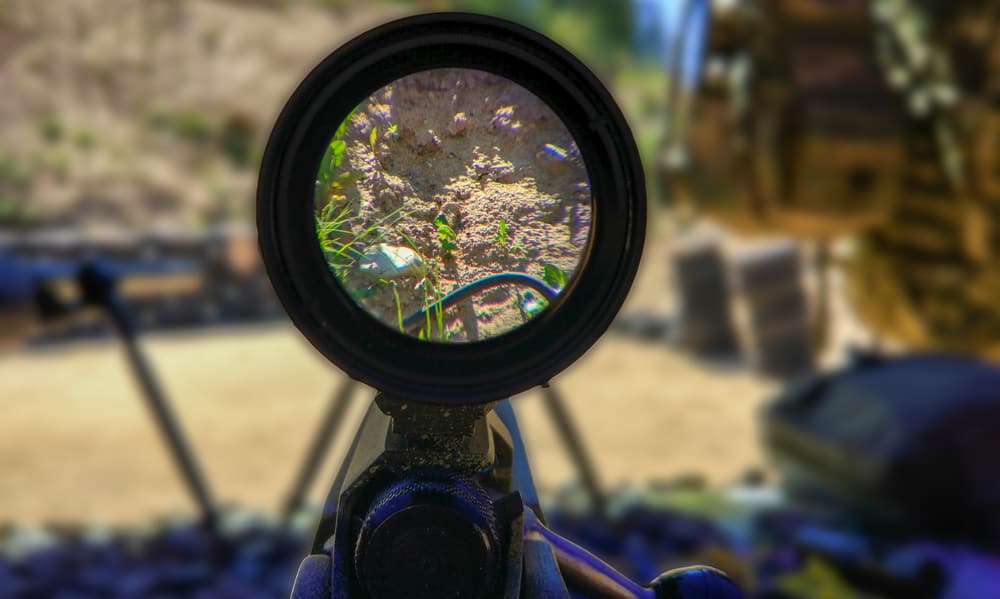I hear this question a lot, especially from novice shooters purchasing their first large caliber rifle. Without hesitation, my answer is always, it depends. There is no one perfect rifle scope that will do every job or perform in every situation. You must match the scope with the distance you shoot, the kind of shooting, and your chosen rifle.
Let’s look at these three criteria in more detail. Understanding how these factors affect your scope decision will inevitably help you make a better decision about which scope to mount on your rifle. Let’s begin with the last of my categories, your rifle.
SKIP AHEAD
The Rifle You Choose to Shoot
Most shooters would never marry an 8×34-55mm telescopic sight to a Ruger 10/22 rifle. Likewise, common sense tells us that a Vortex rimfire scope is not appropriate to mount on a 300 Win Mag. However, there is a lot of room between these two extreme examples.
Matching the optic to the rifle and caliber is as important a consideration as the bullets you shoot. For example, the scope you mount on your Marlin 336 lever-action 30 caliber rifle would be much different than the scope you need for a bolt action rifle chambered for .308. Both are 30 caliber bullets but with different ballistic characteristics.
The key is to match the scope and magnification to the ballistic characteristics of your chosen rifle and caliber. In my example, the Marlin lever-action 30-30 is a great gun for hunting deer in heavily wooded areas. The ranges under these conditions rarely reach 150 yards. The bolt action .308 is enough rifle to take almost any North American game animal and some hunters can expect to shoot at a distance up to 300 yards.
What Kind of Shooting Are you Doing?
Almost as important as the rifle you are shooting is the type of shooting activity. I break these activities down into several categories, each with different factors that affect the choice of scope.
- Hunting at either short, medium, or long distances
- Sport shooting which includes target shooting and competitive shooting
- Long-range precision shooting, a highly specialized type of competitive shooting that requires special optical tools
There is some cross-over between these types of shooting activities. Some hunters shoot at distances that rival long-range precision shooters. Some competitive target shooting requires the same sort of features in a rifle scope as hunting fast-moving game animals. The point I am making is that there is no clear and precise line when choosing a scope based on the type of shooting you do.
Choosing a scope, fixed magnification, or variable telescopic sights needs to be personalized and carefully made.
Shooting Distances – How Far Do You Need to Go?
Distance is always a factor. Ask yourself several questions about the distances you shoot and your capabilities before deciding on a rifle scope.
What is the Longest Shot I Anticipate?
The type of hunting you do or the type of competition you participate in can give you these answers quickly and easily. In Texas, we do most of our deer hunting from fixed blinds. In many cases, a 250-yard shot is at the extreme of ranges.
On the other hand, elk hunters in the Rocky Mountains may routinely need to take shots that range out to 500 yards across a mountain valley to take an elk. Different conditions, different distances, and different rifles. These factors add up to different needs in magnification in a scope.
Competitive shooters, especially in precision long-range shooting, may need to address distances beyond 1000 yards. Most precision competitors shoot from a bench or prone position at a fixed target of known distance. Just being able to see the target at those distances is a challenge for some of us. Magnification becomes a critical issue in these instances.
An Analysis of Distance, Type, and Magnification of Rifle Scopes
In general, we can lay out some basic criteria for the magnification required in a rifle scope for some stated distances and shooting styles. You must remember that these are only general suggestions. You must consider many factors in your personal requirements when choosing a rifle scope.
| Distance | Magnification | Discussion |
| 100 Yds | 3 – 9X | The largest consideration when choosing a 100-yard scope for your rifle includes: The caliber of the rifleAre you hunting or shooting at static targets?Do you need magnification to assist with eyesight problems? Most shooters will find a 3X scope more than adequate for most rifles at 100 yards. If your older, like me, and your eyes need a little boost, a variable magnification scope of 3 to 9X can be helpful. |
| 200 Yds | 4 – 9X | Two hundred yards is the range at which most hunting in the US occurs and is why the 3-9X variable scope is probably the most popular scope sold in the US. Even hunters with great eyesight can benefit from the extra magnification in this scope range. |
| 300 Yds | 4 – 12X | For most hunters, 300 yards is at the extreme edge of their shooting zone. However, competitive shooters may find that 300 yards is mid to short-range for their shooting. The type of shooting you perform becomes more critical in scope magnification selection as distances increase, especially if a match has a vast distance variation. |
| 400 Yds | 4 – 12X | Four hundred yards is not much different than 300 yards when it comes to rifle scopes. As magnification powers increase, the effective ranges also increase. At these longer ranges and with higher power magnification, other factors begin to be important. The clarity of the glass, the light gathering ability of the lenses, and the overall construction quality affect the performance of higher power scopes. |
| 500 Yds | 6 – 18X | When you reach out to 500 yards, you are stepping into a different category of shooting. Most hunters would never consider taking a 500 yard shot on a game animal. Only the most experienced shooters can execute this type of shooting. However, competitive shooters find 500 yards to be in the middle of the distances they routinely shoot. The magnification of the target is important, but you must also consider the field of view, clarity, and precision of the scope at these distances. |
| 1000 Yds | 12 – 24X | Shooting at distances of 1000 yards or more is outside the experience of most average rifle shooters, whether they are hunters or target shooters. Long-range precision shooting is rapidly gaining popularity in the US, but it remains a foreign place for many of us. Not only does long-range precision shooting require much higher magnification scopes, but it also usually means higher caliber rifles that are custom built just for this style of shooting. |
Understanding Magnification in Rifle Scopes
There are some basic concepts that you should understand as you begin to choose a variable magnification rifle scope for your rifle. Having a grasp of the fundamental mechanics of variable magnification scopes will help you make your decision.
What is Going on Inside the Scope
A lot is happening between the objective lens on your rifle scope and your eye. As the light from the target passes through the scope, it is changed and transformed.
- Gathering Light – The objective lens gathers light and focuses it from the target. The light is bent and may pass through multiple lenses to increase the magnification. This bending of the light intensifies the image and can help the clarity of the target you see through the scope
- Keeping Things Right Side Up – The effect of the light passing through the objective lens is an inverted image. The light next passes through a series of lenses that turn the image right side up, so you see what you expect to see. The erector assembly inside the scope holds the lenses that perform this righting. These lenses may also add magnification to the image.
- Keeping Things in Focus – At the end of the scope nearest your eye is the ocular lens assembly. After the image is magnified and flipped, the light passes through a series of lenses that sharpen the image. Some scopes allow you to manually adjust the focus at this point to correct for any vision problems you have.
Calculating Magnification – Size and Distance Understood
What you see when you look through a magnified rifle scope is an image of the real target. The lens’s magnification process in the riflescope creates this linear and proportional image to the real target. In other words, the image you see in your rifle scope appears closer because of the magnification.
When viewed through a riflescope with 3X magnification, your target appears to be three times as close. A target 300 yards away will appear to be only 100 yards distant through a 3X scope. Taking this to an extreme, a 24X scope will make a target that is 1000 yards away appear as if it were only about 42 yards away.
The Downsides of High Magnification – The Tradeoffs
The more power you have, the more problems you may encounter. While this sounds like something out of a superhero movie, it is a truth in higher magnification scopes. The more power you invoke with the telescopic magnification of your riflescope, any problems or deficiencies in the scope are also magnified.
The Prism Effect
Some higher power scopes tend to aberrations in the light as it passes through the scope to your eye. These aberrations can include problems with light refraction, which looks a lot like a rainbow in the image of your scope.
The prism effect can cause strange distortions in the image, glinting or color changes in the image, or even blurry effects around the edges of the image that look purple to some people.
Field Curvature – Things Aren’t as Flat as They Seem
As the light is bent and refracted in the scope, it becomes more spherical than flat. The point of sharpest focus is near the center of the scope at the crosshairs of the reticle. The higher the magnification, the more pronounced the blurriness can be at the edges of the image in the scope.
The Problems with Bending Light
Magnified rifle scopes depend on the lens’s ability to bend light. The light entering the scope’s objective lens at the edges must be bend more than the light entering the lens’s center. The light at the edge needs to travel further than the light at the center of the lens. It also tends to have a different point of focus. Both phenomena affect the focus and clarity of the scope due to spherical aberrations.
How Much Can You See – Field of View
Scope manufacturers make a point of advertising the field of view, especially on higher magnification scopes. The field of view is the area around the actual target you can see in the scope at a given magnification. The field of view decreases proportionally to the magnification. The higher the magnification, the less of the target you can see.
Field of view is especially important to hunters who need to track moving game or even take a shot on a moving target at a higher magnification. As magnification increases and the field of view decreases, the ability to hold on or track moving targets gets more difficult.
Less Light for You to See
Higher power magnification requires more light bending capability. More magnification translates into thicker lenses in your rifle scope. Every time light passes through a lens, no matter how high the quality of the glass, some of the light is absorbed. No lens transmits 100 percent of the light.
Scopes that produce high magnifications suffer from decreased light transmittal, which can cause dimmer images in the scope at higher magnifications.
More Weight to Carry
Another effect of scopes with higher magnification is more weight on your rifle. High magnification scopes must be longer, have more lenses and thicker lenses. All these things translate into a heavier scope. For competitive long-range shooters, this may not be anything more than an inconvenience. If you are lugging that scope and rifle up the side of a mountain in a driving snowstorm, that extra few ounces may be a huge factor.
The Basic Rule of Thumb for Choosing Magnification in a Rifle Scope
To boil everything in this article down to one rule of thumb is difficult. However, the simplest way to bring this all together is this
Choose only the highest level of magnification in your riflescope that allows you to hit your target reliably.
Avoid the “more is better” concept and keep your expectations to your shooting style. In the long run, you will benefit in many ways from your decision.





